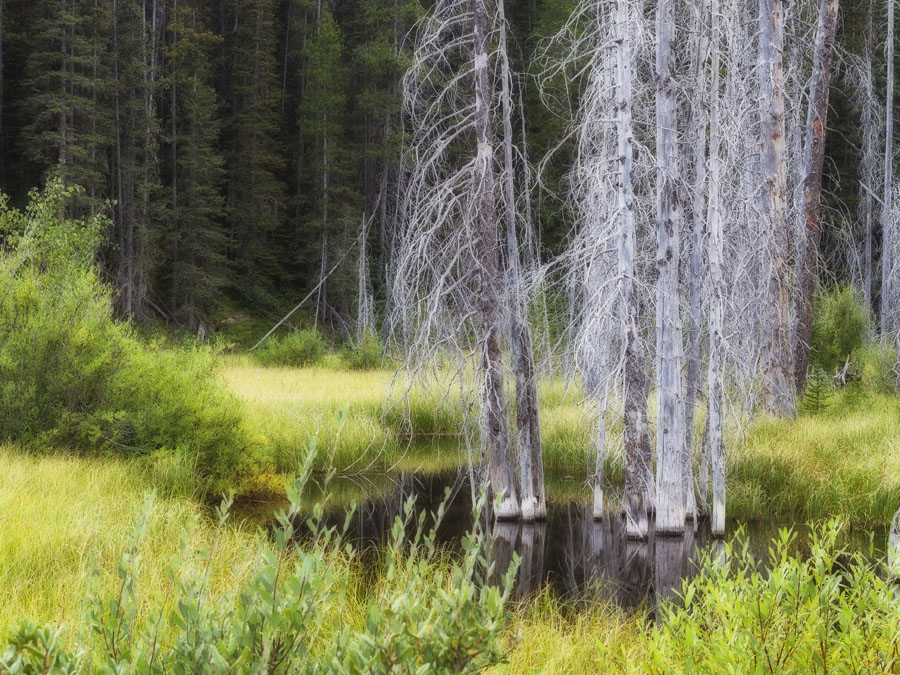The Orton Effect, is a photography technique which blends two completely different photos of the same scene, resulting in a distinctive mix of high and low detail areas within the same photo. It was originated by photographer Michael Orton in the mid 1980’s. The original technique was to overlay two or more images of an identical scene with very different exposures on slide film. One image is sharply focused and the others are very out of focus. Orton has also experimented with similar techniques, substituting one of the images in the composition for one of a different subject, such as a texture layer, or combining a multi-colored image and a monotone one.
Today, I’m sharing an image that I prepared using a variant of the original technique. We don’t use slides very much anymore but the Orton Effect can be easily applied using digital images. Typically, I would take two photographs, identical but for differences in sharpness and exposure. One is sharp and over-exposed; the other is out-of-focus and under-exposed. The two images are overlaid, then blended to produce the final picture. In this particular case, I used only one image, which I duplicated atop the original. I now have a layered file with two identical layers. I sharpen one and increase its exposure while blurring the other and decreasing its exposure. I use the “multiply” blending mode in Photoshop to meld the two images into the one you see below. (I also did a little tweaking to get the “look” I wanted.) The result is what you would likely term an “abstract” composition with the unique feature of looking “sharp” and “soft” at the same time.
The original photo was taken in a swampy area at the very south end of the Smith-Dorrien Trail in Kananaskis Country. It features a stand of dead lodgepole pine trees in an area of open water in the marsh. The overall impression of this picture is soft and fuzzy, yet the detail of the trees is very sharp as are the individual blades of grass around the pond. The lighter areas of the picture, the trees and grasses are very bright. Darker areas, such as the water in the pond and the healthy trees in the background are very much darker. The combination of the under and over-exposed images produces this strong contrast.

This technique is an example of one that pre-dates digital photography. Photographers have always been manipulating images in one form or another. Today, it’s done with computer software.

Interesting. The technique in this case increases the complexity of the composition without materially changing it. I had never heard or seen the technique previously, but am appreciative of the results. Thank you, Pete!